Comets & Quasars
Posted: 30 April 2024
On Monday, 29 April 2024, I participated in the inaugural meeting of the Indiana University Astronomy Advisory Board. It is an honor to be selected to serve on the Board that will influence the direction of the IU Department of Astronomy for the next several decades.
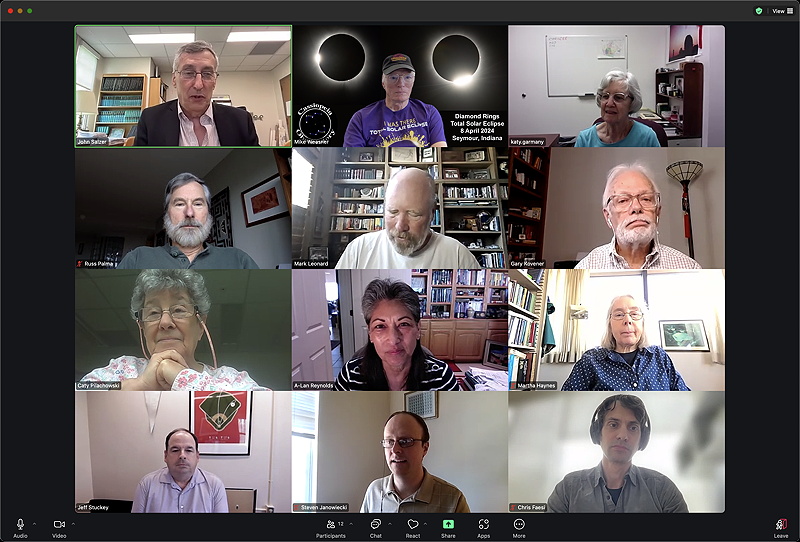
|
Open: Monday, 29 April 2024, 1810 MST Temperature: 92°F |
Session: 1959 Conditions: Clear, breezy |
Equipment:
12" f/8 LX600 w/StarLock
2" 24mm UWA eyepiece
Focal Reducer
2" 30mm eyepiece
Camera:
D850 DSLR
iPhone 15 Pro Max
SYNCed the observatory clock to WWV time signals.
1820 MST: Relaxed on the observatory patio bench.
1908 MST: Sunset. Calm now.
Back in the observatory I prepared the D850 DSLR for imaging later.
1913 MST: LX600 ON, StarLock OFF, High Precision OFF.
1916 MST: Viewed Jupiter, low in the western sky and through tree limbs, 102X.
1918 MST: Wi-Fi ON.
Used SkySafari 7 Pro on the iPhone 15 Pro Max to GOTO Comet 13P/Olbers, low in the western sky. It was not yet visible in the bright twilight sky.
1920 MST: Wi-Fi OFF.
1922-2000 MST: Relaxed on the bench while waiting for the sky to get darker.
2004 MST: Comet 13P/Olbers faintly visible in the twilight sky, 102X.
Mounted the D850 DSLR at prime focus + focal reducer, focused on the star Capella, and locked the primary mirror.
2010 MST: Wi-Fi ON.
Using SkySafari Pro did a GOTO to the Comet 13P/Olbers.
2012 MST: StarLock ON.
StarLock autoguided images of Comet 13P/Olbers, prime focus + focal reducer, 1 minute, ISO 3200. First image was photobombed by two satellites.
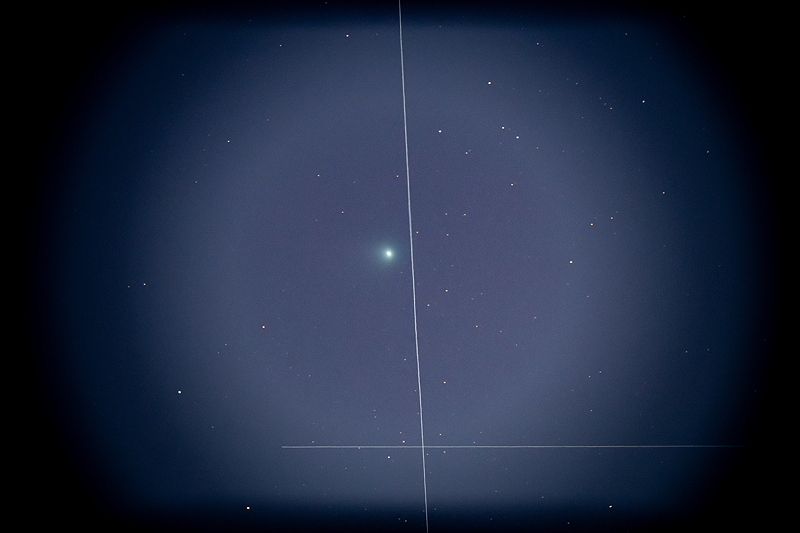
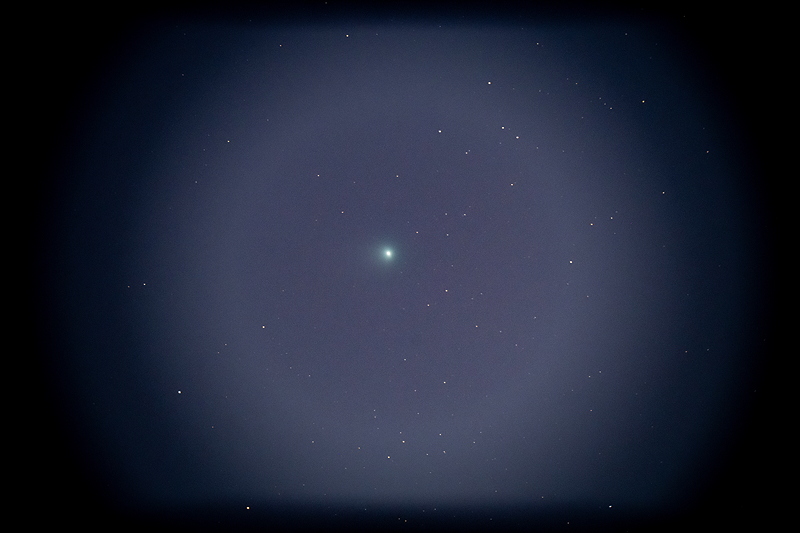
The comet was now behind a tree near the observatory.
2019 MST: StarLock OFF, Wi-Fi OFF, High Precision ON.
Slewed to Quasar PG 1211+143.
2027 MST: Dome OFF.
2028 MST: StarLock ON.
Imaged these quasars, StarLock autoguided, prime focus + focal reducer, 5 minutes, ISO 6400. Some small galaxies are visible in the first image.
Quasar PG 1211+143 (Mag. +14.0, 1.1 Billion Lightyears)
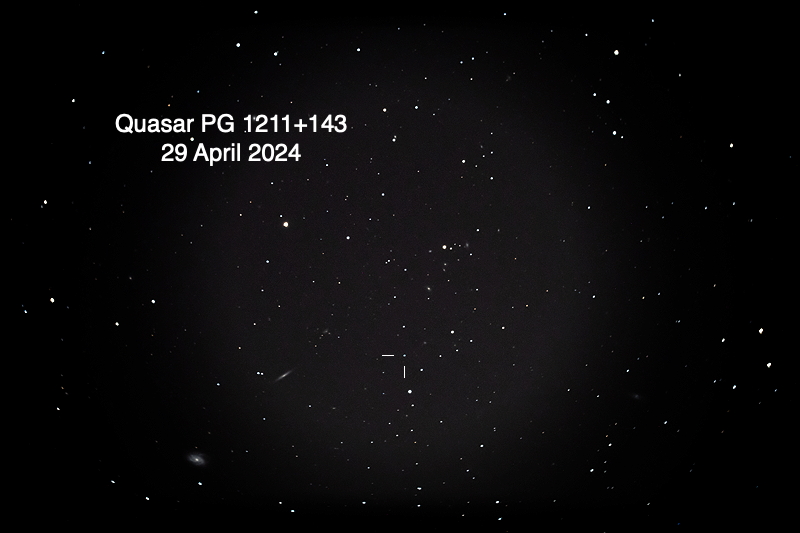
Quasar RX J1230.8+0115 (Mag. +14.8, 1.5 Billion Lightyears)
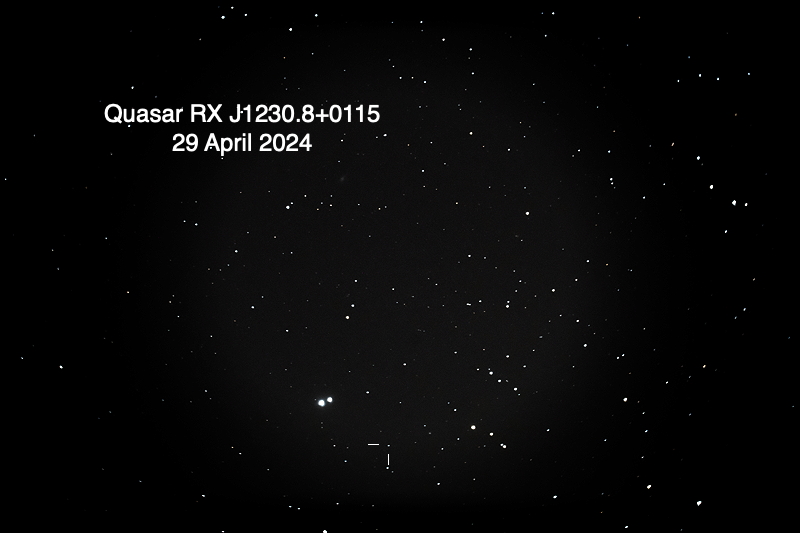
Viewed Comet Tsuchinshan-ATLAS (C/2023 A3), 102X and 81X. Nice short tail visible.
Attached the LiDAR Cover on the iPhone 15 Pro Max and mounted the iPhone on the 30mm eyepiece using the 3-axis adapter. Took this StarLock autoguided image of Comet Tsuchinshan-ATLAS (C/2023 A3) using NightCap Camera (Long Exposure, Light Boost, ISO 50000, 1sec, 1 minute, 1X lens).
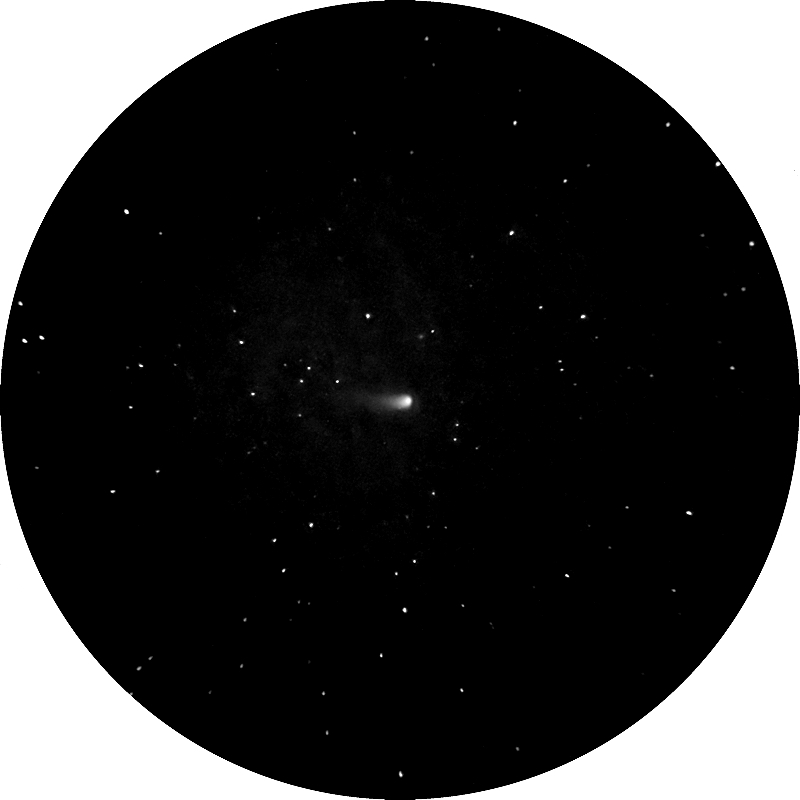
2107 MST: LX600 OFF.
2112 MST: Took a Sky Quality reading and reported the result to Globe at Night.
2114 MST: Dome ON.
|
Close: Monday, 29 April 2024, 2119 MST Temperature: 63°F |
Session Length: 3h 09m Conditions: Clear, SQM 21.01 |
Comments are welcome using Email. Please read the Email Etiquette guidance.
Cassiopeia Observatory Home Page
Copyright ©2024 Michael L. Weasner / mweasner@mac.com.
URL = http://www.weasner.com/co/Reports/2024/04/30/index.html
